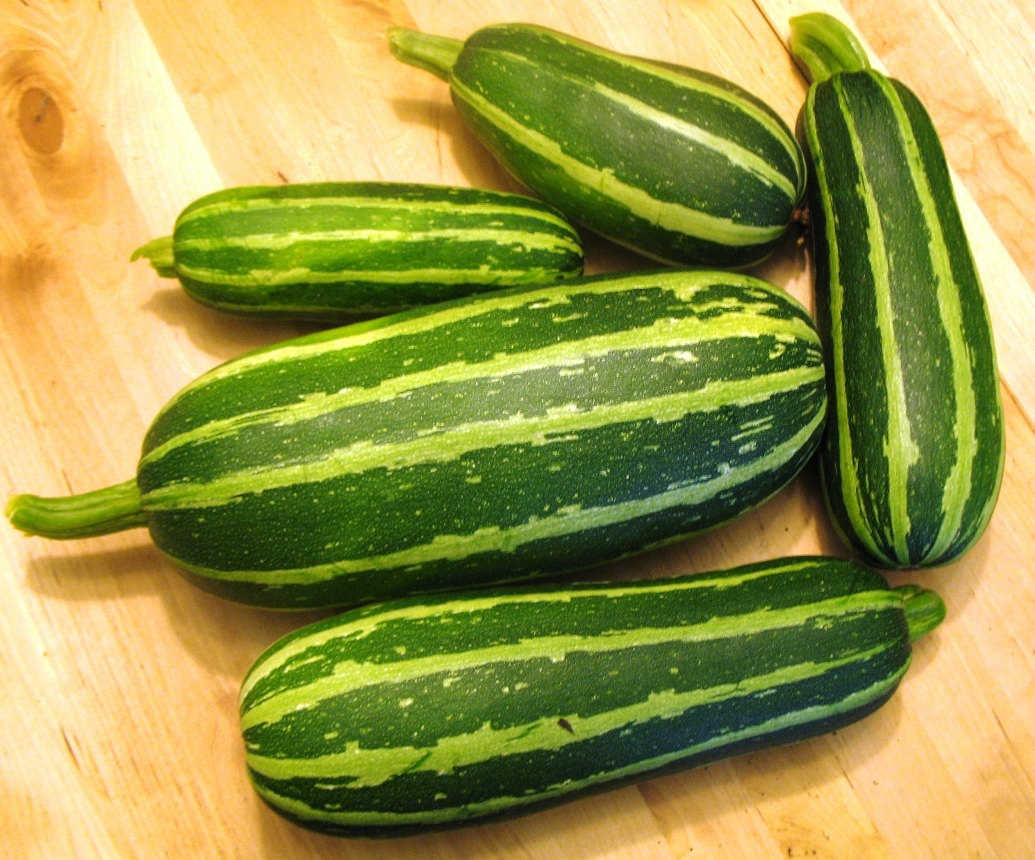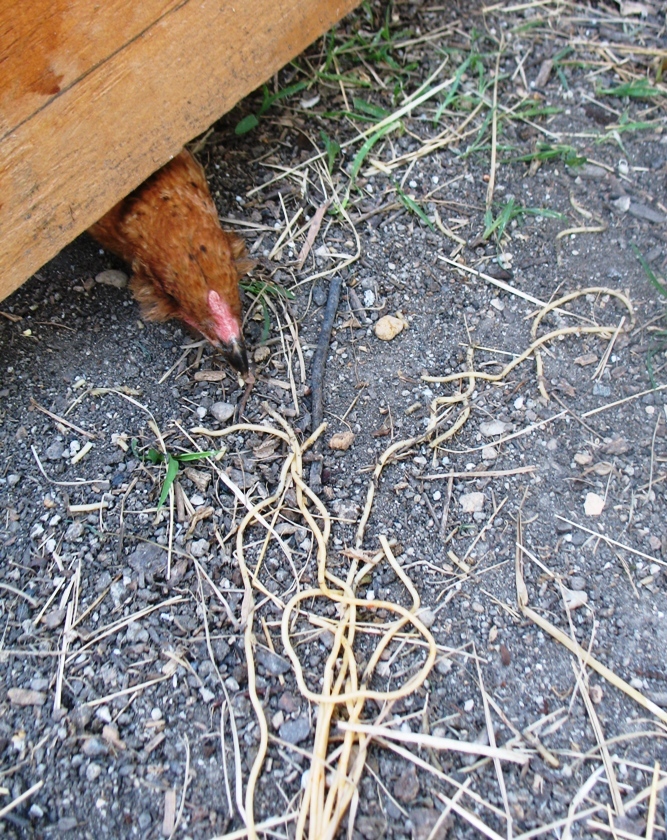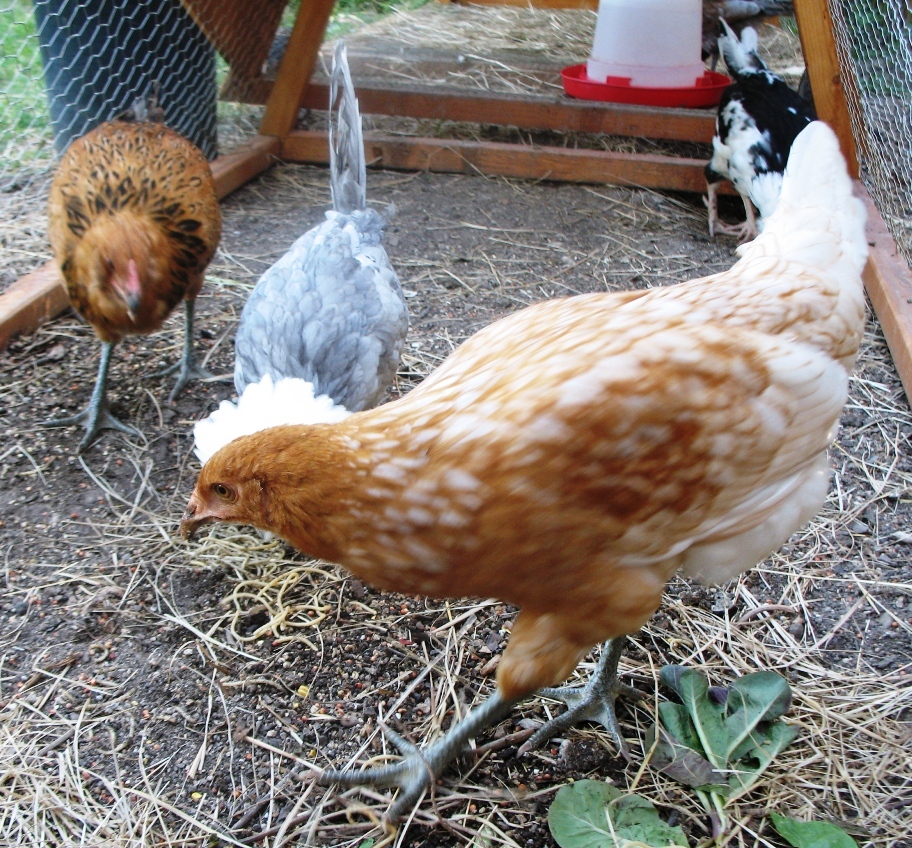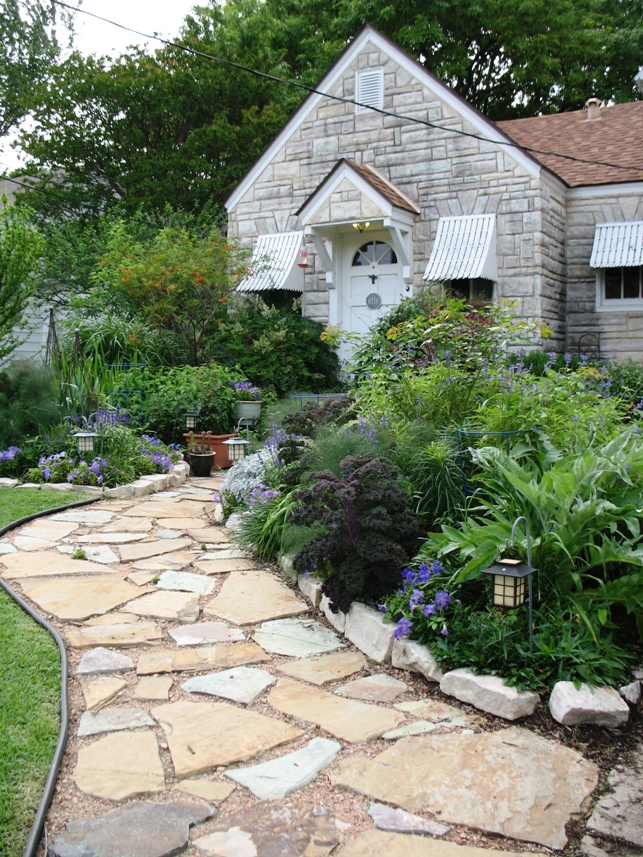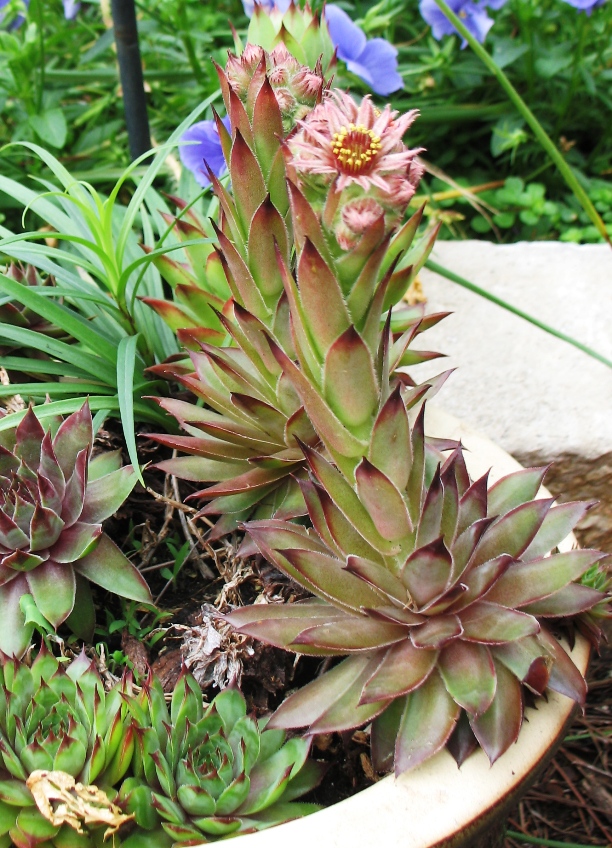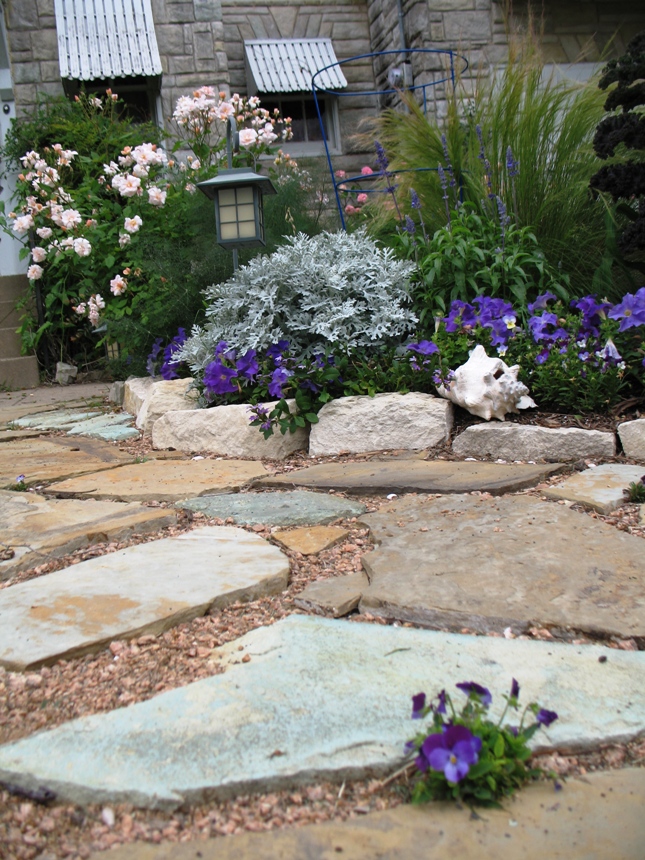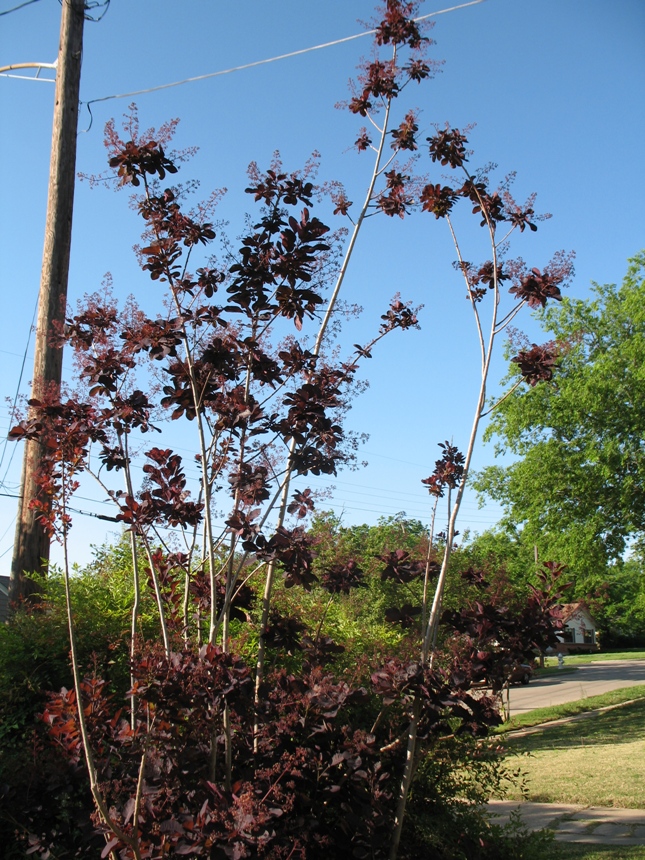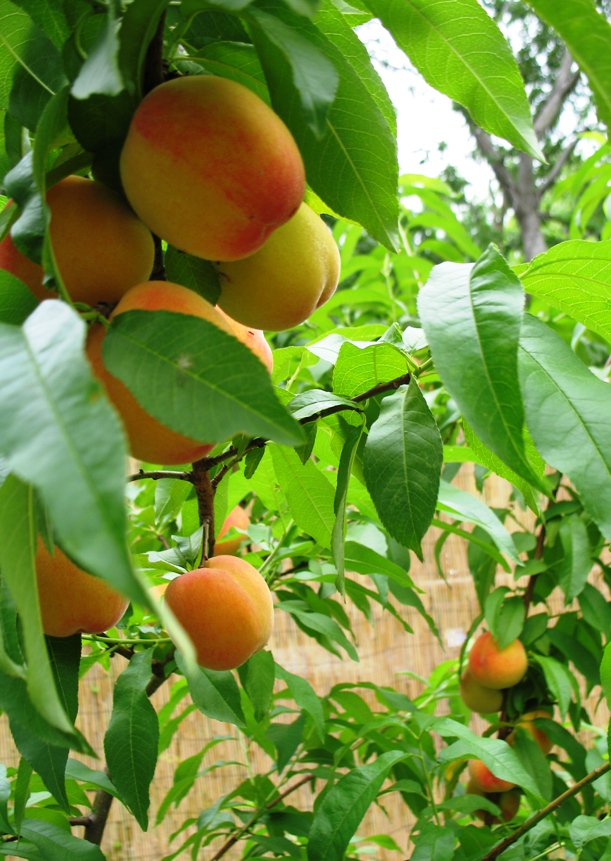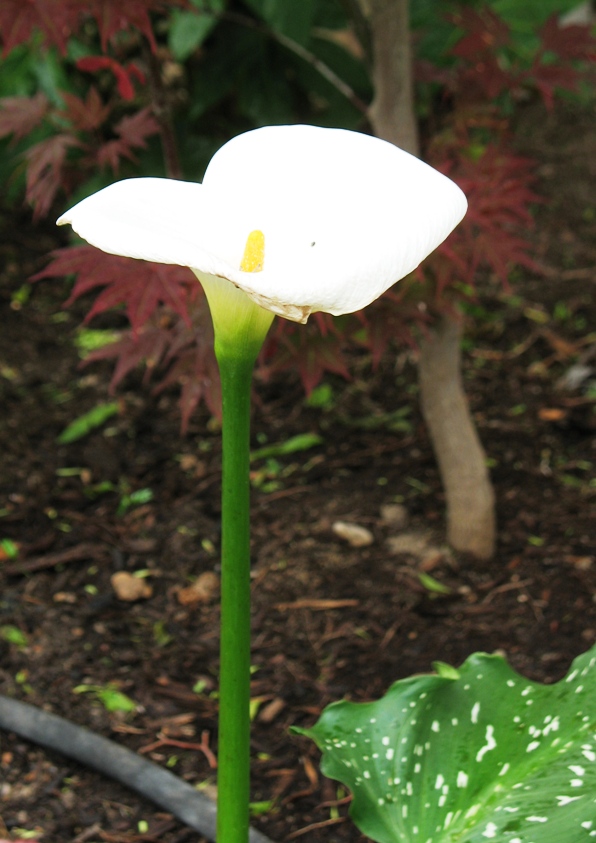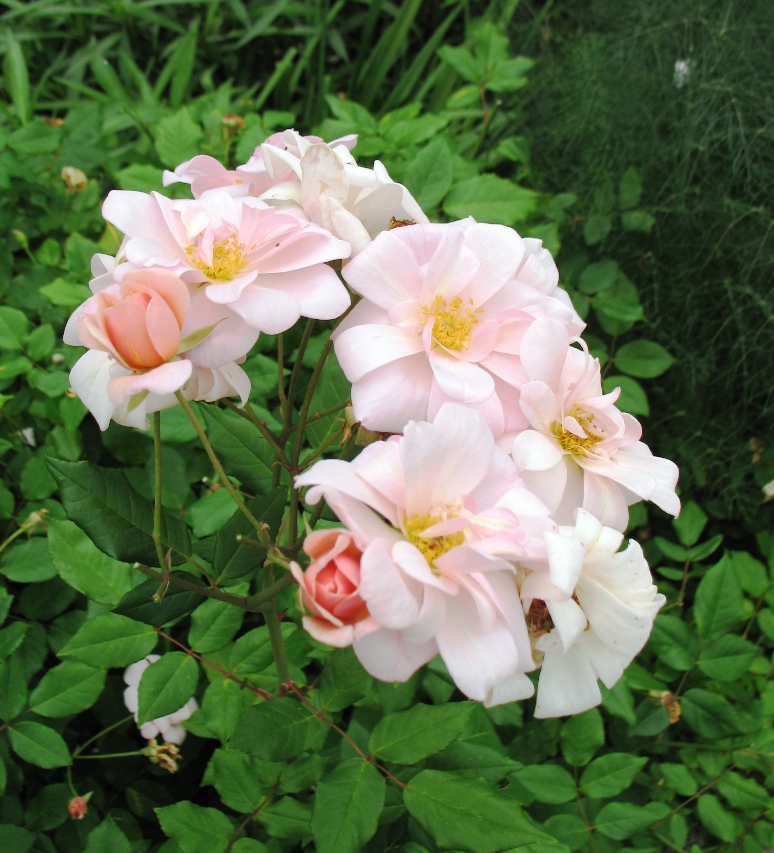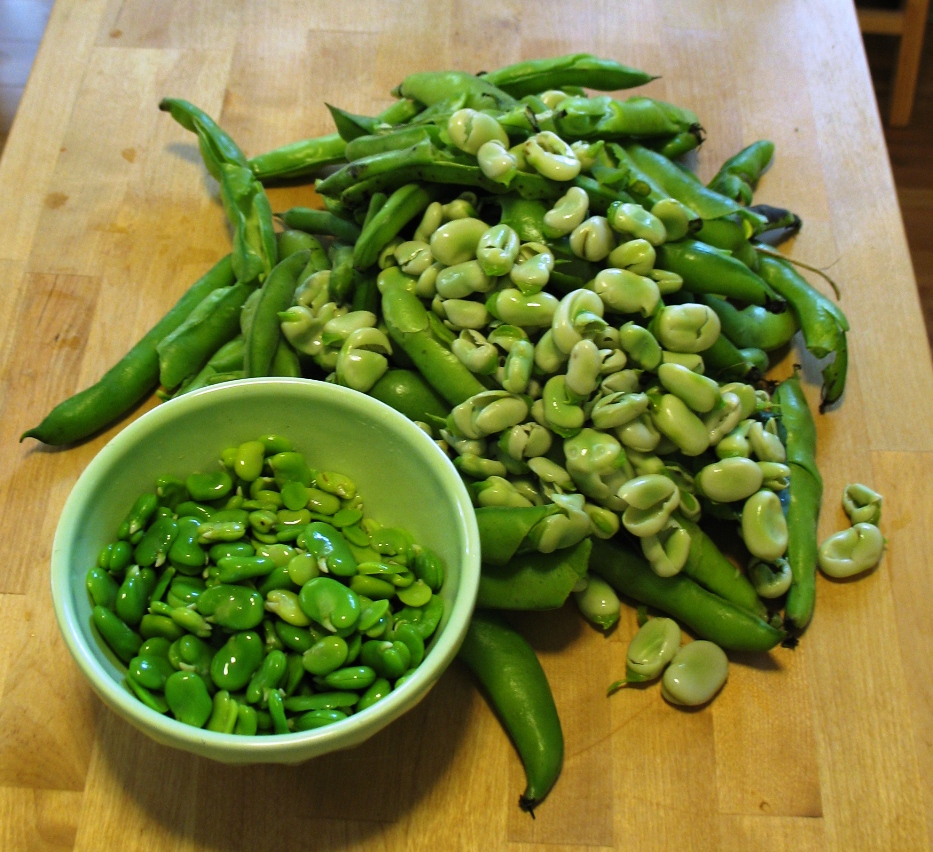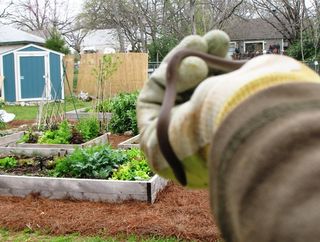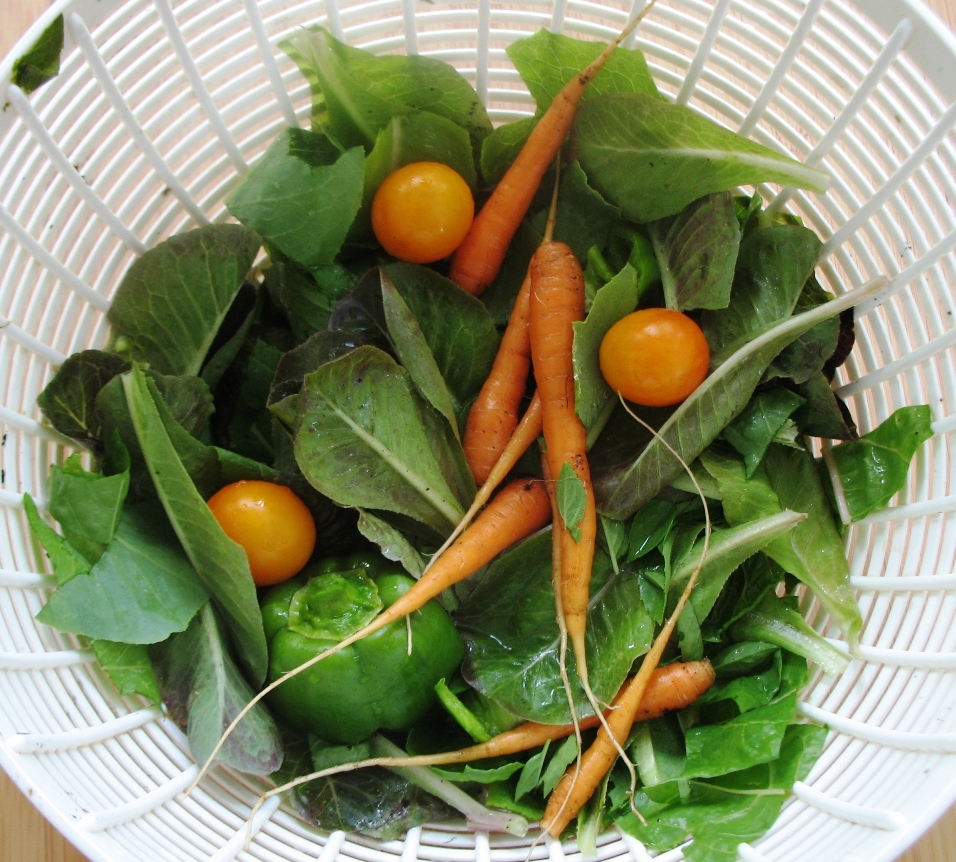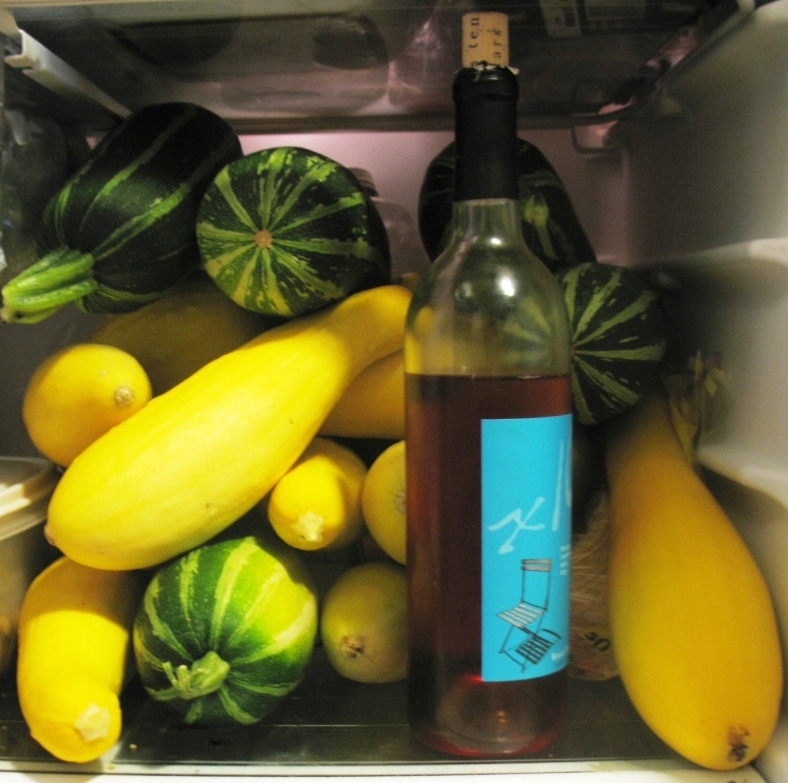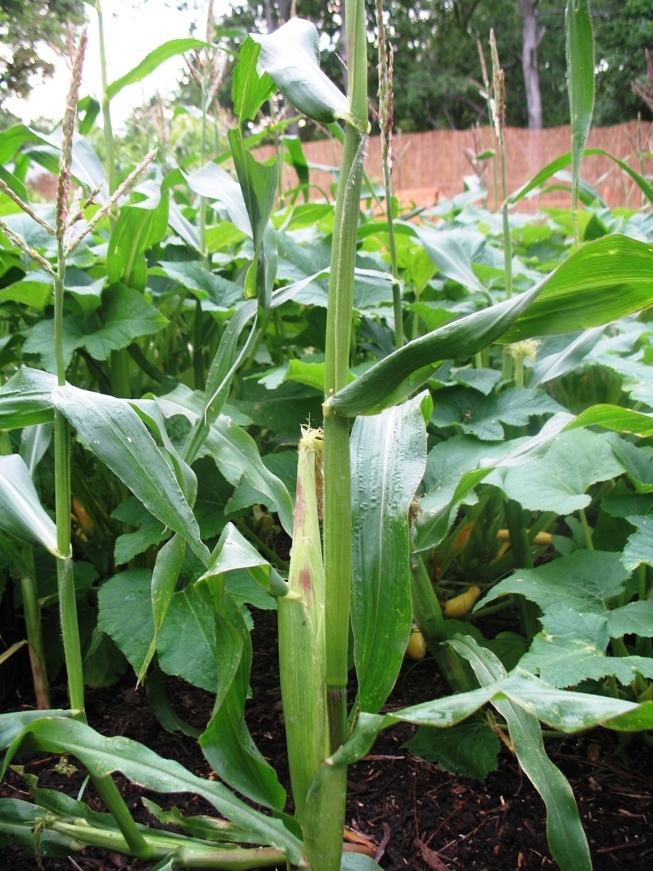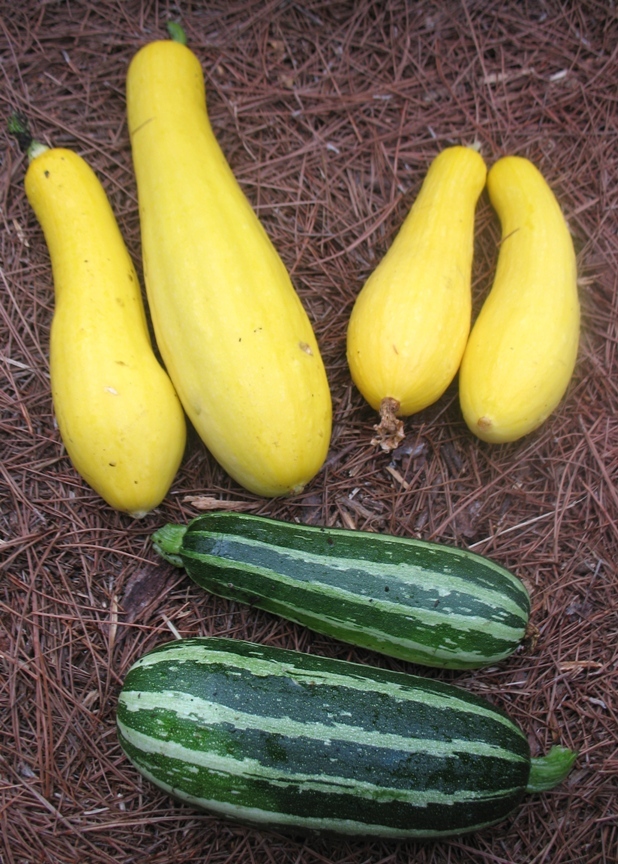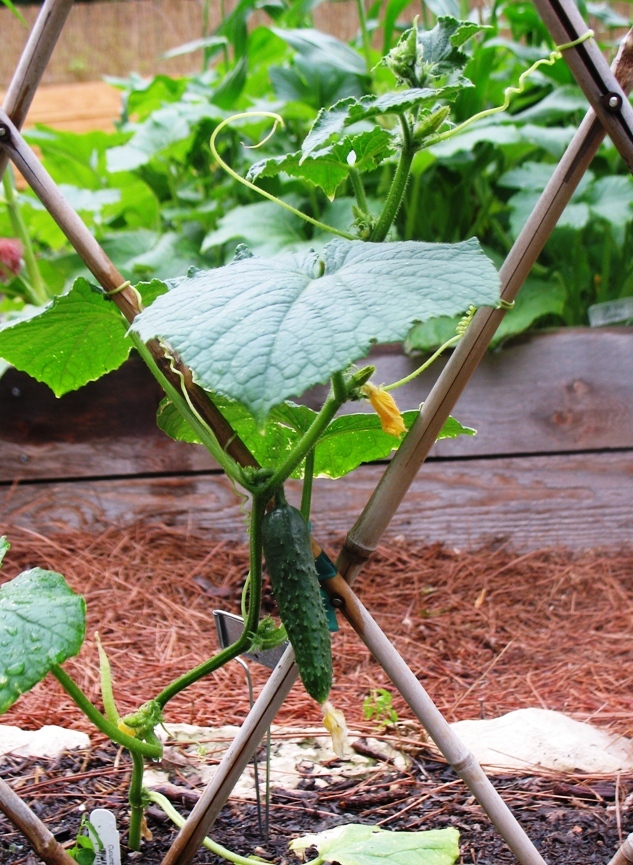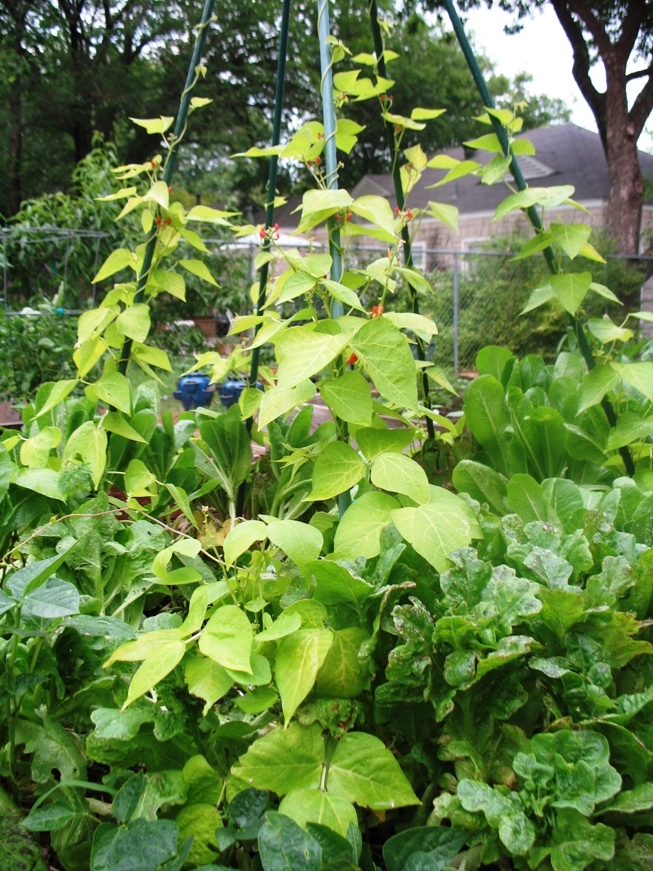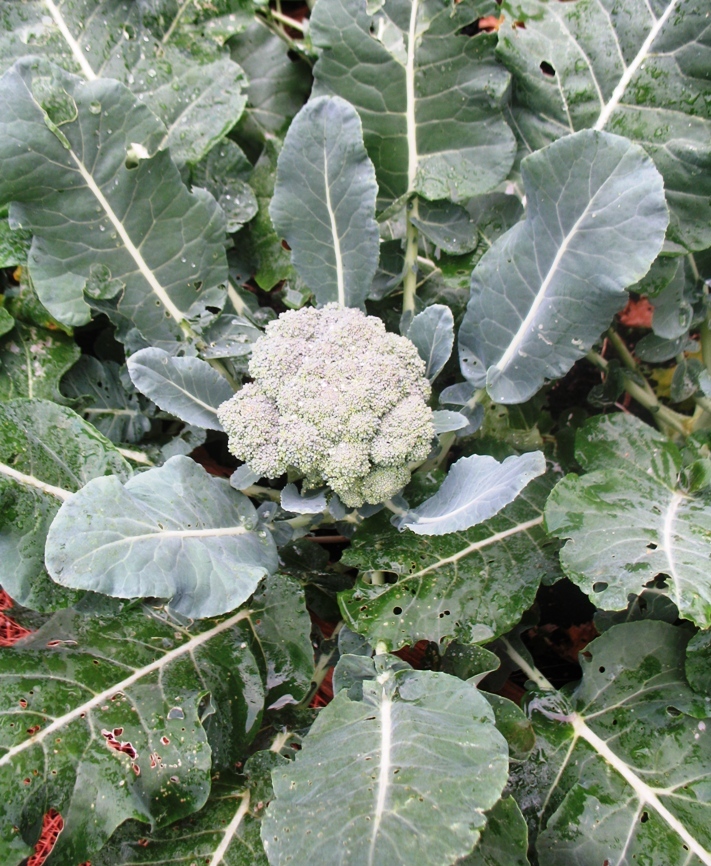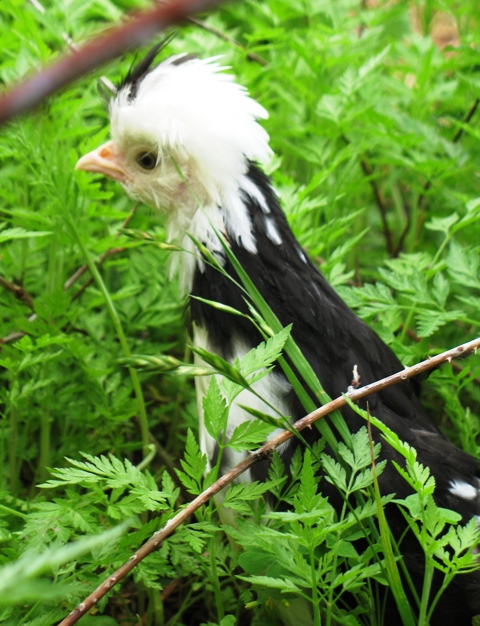Backyard Chickens in the Garden
June 13, 2009
Here are a few updated shots of the girls from this morning. They had another spaghetti eating frenzy so they're in a pretty good mood! No eggs yet, but surly Eunis should start laying any day now. With her nasty attitude she'd better start making herself useful quick! The big bully has started pecking all the other's tails to a nub. Not good. Also, I think I'll be building a bigger coop, possibly next weekend. I've decided I'd like a walk-in, which will also make daily care easier for those who have to babysit if we're away.
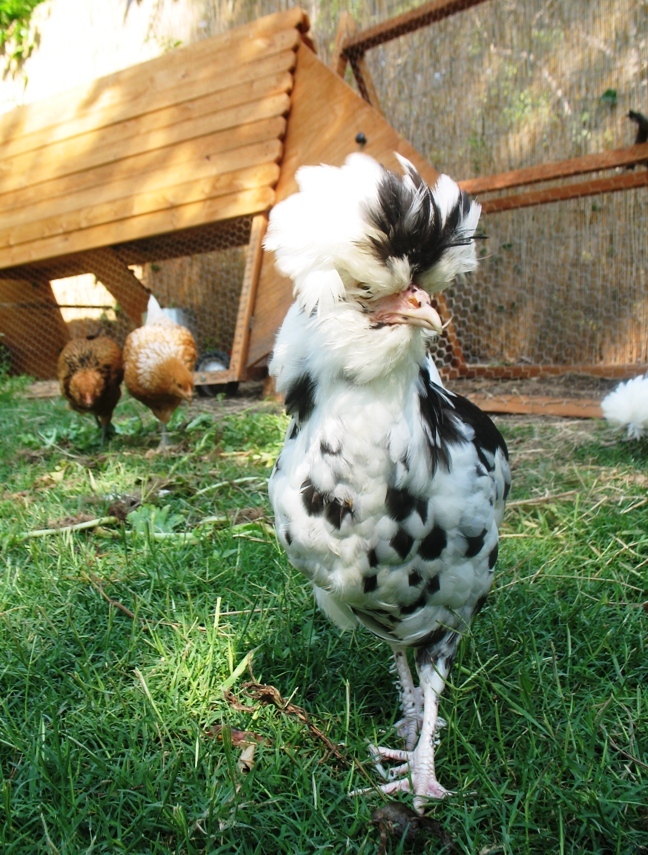
Einstein the Houdan
PC: Leslie F. Halleck
Einstein the Houdan in all her crazy glory...she does like to pose for the camera.

Einstein the Houdan
PC: Leslie F. Halleck
Mean, mean Eunis...she even looks mean in her pictures. And Phab Phyllis doin' her thang.
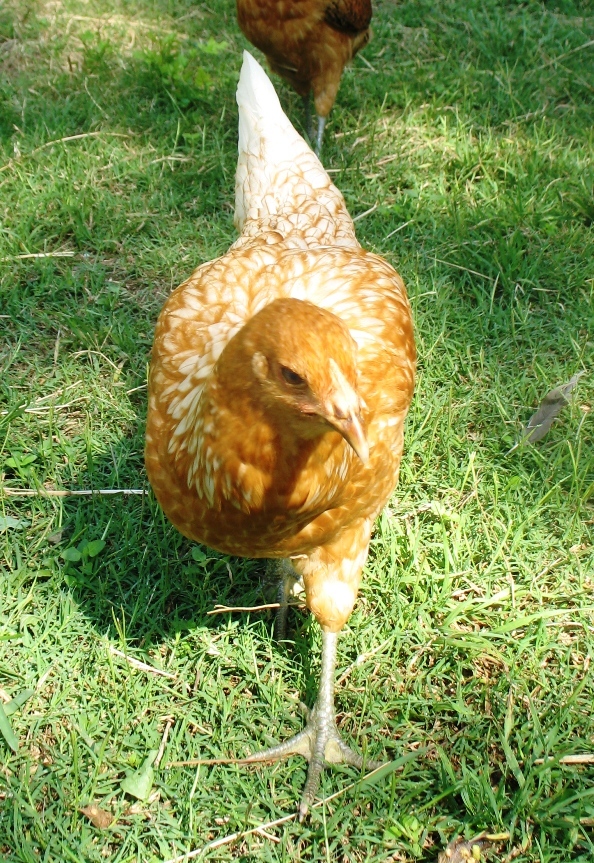
Eunis the Mean
PC: Leslie F. Halleck
And my sweet little Scooter. This morning there were some drops of water on my arm from refilling their waterer...she actually drank them off my arm, all gentle like. It was adorable. Yeah, Sean doesn't get to eat her! Didn't manage to get a good shot of Pecker this morning..she's always freaked out.
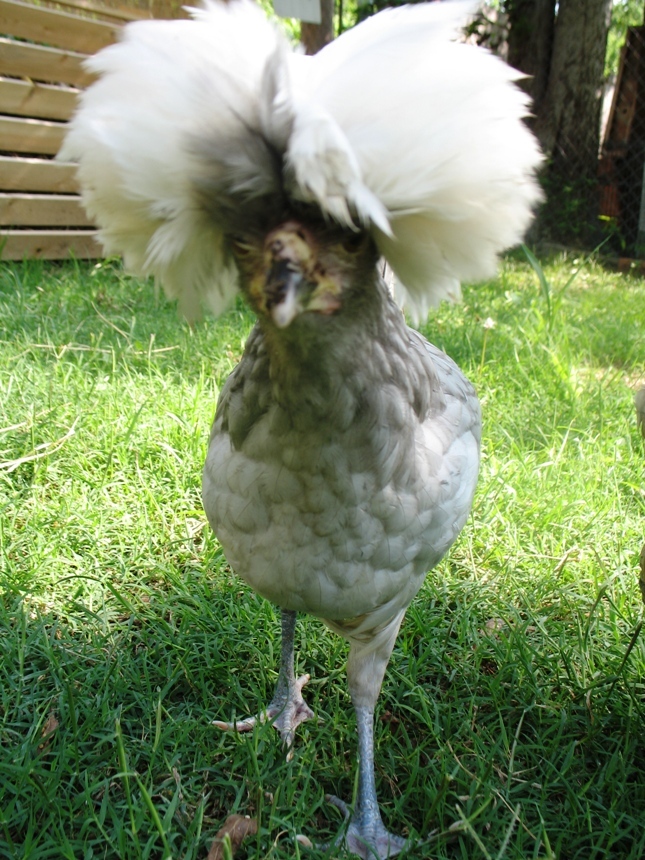
Phyllis the Crazy
PC: Leslie F. Halleck
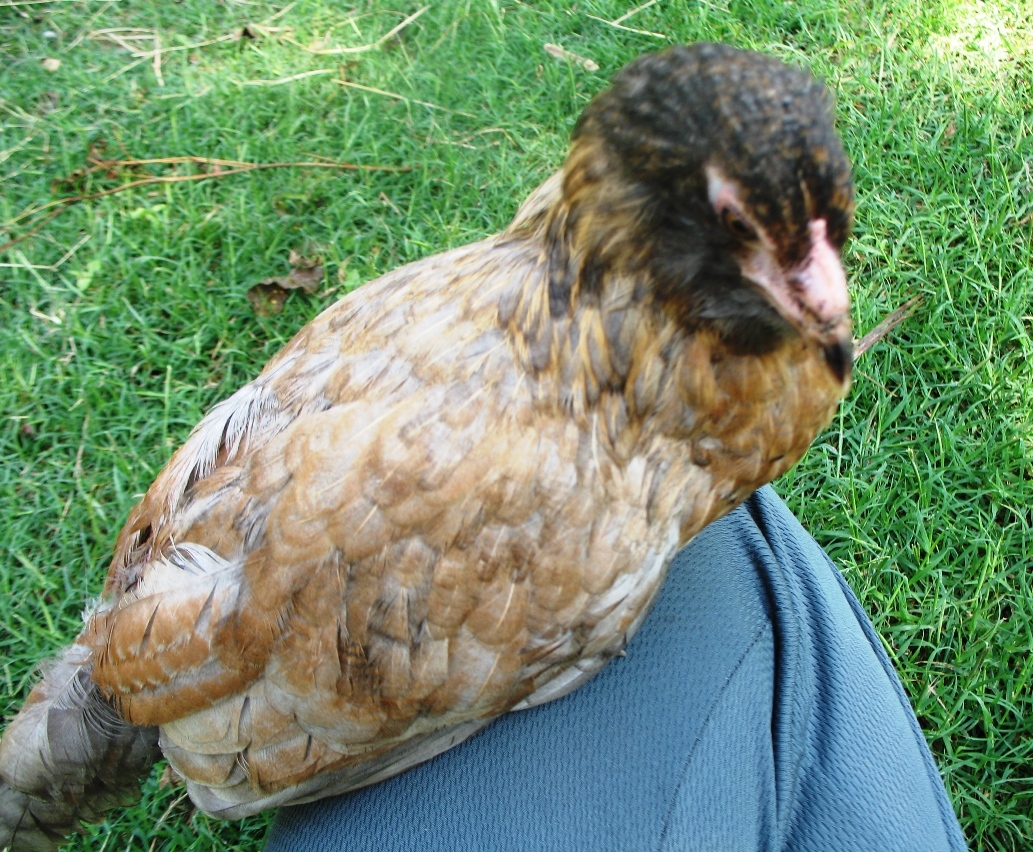
Scooter the Sweet
PC: Leslie F. Halleck
And my sweet little Scooter. This morning there were some drops of water on my arm from refilling their waterer...she actually drank them off my arm, all gentle like. It was adorable. Yeah, Sean doesn't get to eat her! Didn't manage to get a good shot of Pecker this morning, she's always freaked out.

